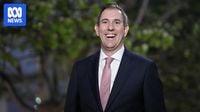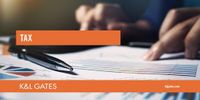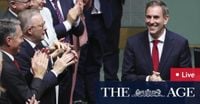Australia's 2025 federal budget aims to address the ongoing cost of living crisis with a mix of tax cuts and targeted spending initiatives.
The headline measures, announced on March 25, include tax cuts for all Australian taxpayers, starting in 2026. The Labor government, led by Treasurer Jim Chalmers, has proposed reducing the tax rate from 16% to 15% in July 2026 and further down to 14% in July 2027. In addition, the proposal includes a tax relief of up to $268 for the first year and $536 in subsequent years, which many expect will support low- and middle-income earners.
Looming criticism from opposition leaders has surrounded these budget measures as they attempt to poke holes in the government's financial strategies. Specifically, Coalition leader Peter Dutton has referred to the proposed tax cuts as a 'hoax,' arguing that the relief when averaged out offers merely 70 cents a day. "There are a lot of people across the country who are working harder than ever before, and they just know that this government's budget has made it even harder for them to pay their bills," he stated during a news interview.
The tax cuts are estimated to cost the government $17.1 billion over a four-year period, adding to the political complexity ahead of the upcoming election. The Coalition's opposition is targeting Labor's budget proposals as part of their strategy to support their own campaign. Dutton is expected to present an alternative policy to counter the budget when he speaks on March 27.
As part of a week where parliament is active with budget discussions, Labor is also proposing an $8.4 billion bulk billing subsidy and a $1.8 billion extension of energy bill relief. Despite this, the Coalition plans to cut tens of thousands of public service jobs, hoping that these fiscal policies will lay a more substantial groundwork for their upcoming campaign. In the midst of this budget turmoil, some economists and advocates are lamenting the focus on tax cuts, stating that vital systemic reforms are being ignored.
On March 26, after Labor introduced their tax cuts in parliament, all eyes turned toward the Senate, where the debate quickly became colorful. Notably, Greens senator Sarah Hanson-Young waved a dead salmon during the debate, a symbolic act highlighting environmental concerns amidst calls for urgent change in government policy. The spectacle drew laughs in the chamber but also underlined deeper frustrations among young activists, who had installed toilets outside the offices of various MPs, accusing them of ‘flushing our future down the toilet’ through inadequate responses to the climate and housing crises.
This artistic protest reflects a broader discontentment among younger Australians who feel abandoned by traditional political parties. Activists from Tomorrow Movement expressed that while the government pledges billions for submarines and developer handouts, younger generations are struggling with housing affordability and secure employment.
So amid these theatrical and contentious performances in parliament, the leading parties are also grappling with the recent migration statistics, forecasting approximately 1.8 million migrants to arrive in Australia over the next five years. Coalition representatives argue that such numbers will further strain the cost of living despite Labor’s attempts to positively spin their budget as a solution.
The government, under Chalmers’ direction, claims the budget has established two surpluses for the first time in 15 years. He proudly states, "We're proud of the budget that we handed down last night," and emphasized that tax relief is aimed at helping those burdened by rising costs.
However, economists highlight some looming issues with the budget—such as increasing federal expenditures across multiple divisions without a sound long-term fiscal plan to maintain balances and efficiencies. According to experts, while tax cuts may provide immediate relief, they do not address the longstanding systemic challenges that the Australian economy faces and could hinder more substantial reforms needed for a sustainable economic future.
Recent commentary from industry leaders indicates that additional measures are essential to fundamentally alter the fiscal landscape beyond mere tax cuts. For instance, Saul Eslake, an independent economist, denoted that with federal spending expected to rise consistently over the next decade, tough conversations on long-term revenue generation must take place.
As political leaders prepare for upcoming discussions and further vote maneuvers in parliament, the recent budget proposal demonstrates a significant testing ground ahead of the elections. While the government seeks to position itself as the defender of working families through tax relief, the Coalition may likely counter with its critiques surrounding inflation and living costs.
Ultimately, this battle over budget allocation strategies will serve as a pivotal moment for all involved, with Australians keenly awaiting more definitive help addressing mounting pressure on their cost of living.








